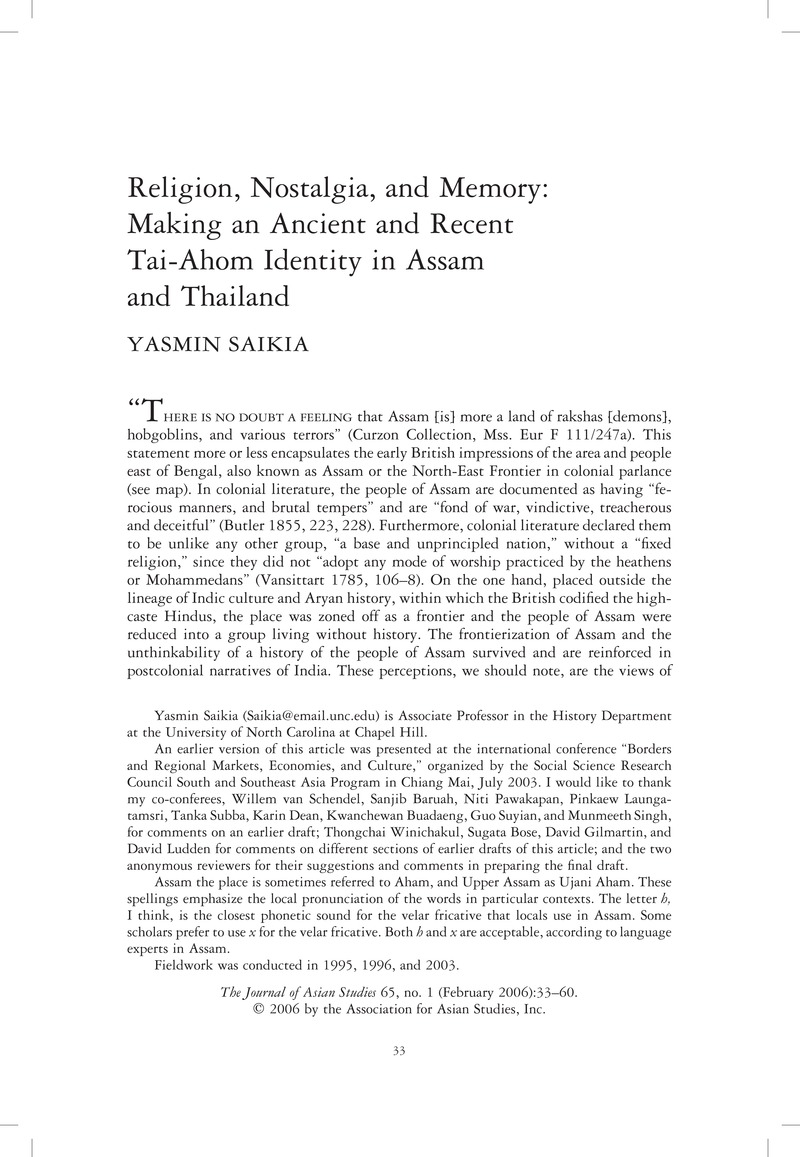Crossref Citations
This article has been cited by the following publications. This list is generated based on data provided by Crossref.
Phukan, Khammoun
2020.
CONSTRUCTING ETHNIC IDENTITY IN RAJANIKANTA BARDOLOI’S MIRI JIYORI: A (POST) COLONIAL UNDERSTANDING OF THE TEXT.
Humanities & Social Sciences Reviews,
Vol. 8,
Issue. 4,
p.
657.
Sengupta, Madhumita
and
Bharadwaj, Jahnu
2021.
Caste census and the impact of colonial sociology in British Assam.
Asian Ethnicity,
Vol. 22,
Issue. 4,
p.
516.
Hari, Amrita
and
Nagpal, Sugandha
2022.
The National Register of Citizens (NRC) in India and the potential for statelessness in situ: a cautionary tale from Assam.
Contemporary South Asia,
Vol. 30,
Issue. 2,
p.
194.
Joshi, Vibha
2023.
Book review: Jelle J. P. Wouters (Ed.), Vernacular Politics in Northeast India: Democracy, Ethnicity, and Indigeneity.
Journal of South Asian Development,
Vol. 18,
Issue. 2,
p.
329.
Hazarika, Dibyanjoly
and
Ghosh, Tanvhi
2023.
Science, racism, and nature in India's upper Assam's British tea empire.
Asian Journal of Social Science,
Vol. 51,
Issue. 4,
p.
237.
Kumar, Sachin
Singh, Prajjval Pratap
Pasupuleti, Nagarjuna
Tripathy, Veena Mushrif
Chauley, Milan Kumar
Chaubey, Gyaneshwer
and
Rai, Niraj
2024.
The genetic admixture and assimilation of Ahom: a historic migrant from Thailand to India.
Human Molecular Genetics,
Vol. 33,
Issue. 11,
p.
1015.
Gogoi, Nitish
2025.
In search of decolonial spaces! A former Bodo woman rebel’s ‘intimate testimonies’ of death, desires, and romance in times of ethnonationalist armed struggle in Assam, India.
Asian Ethnicity,
p.
1.



